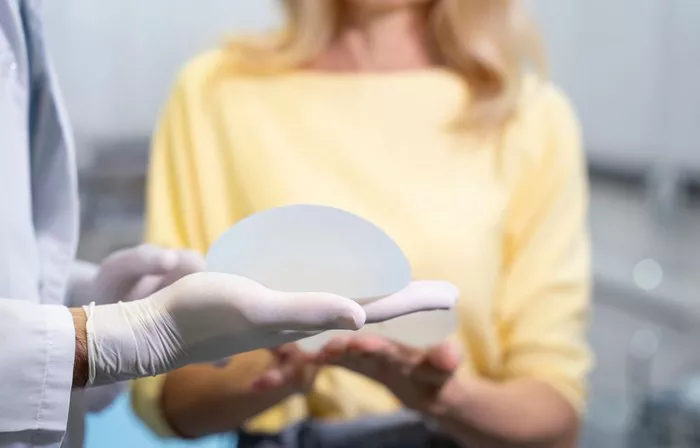The technique used in creating the implant pocket during breast augmentation plays a pivotal role in determining the longevity and aesthetic outcome of breast implants, asserts Dr. Ho Cao Vu from Cho Ray Hospital’s surgical department in Ho Chi Minh City.
Dr. Vu, with extensive experience in implant removal surgeries, has encountered cases where breast implants, some nearing 20 years old, have remained remarkably intact. He emphasizes that besides the quality of implants—certified by the FDA—surgical technique significantly influences outcomes. Variations in pocket creation technique can lead to disparate results even when implants are placed simultaneously, as observed in cases where one implant remains intact while the other ruptures.
One such case involves Diem Thuong, 48, who underwent breast augmentation using 350cc saline implants two decades ago. During implant removal surgery performed by Dr. Vu, it was noted that while the left implant showed no signs of aging, the right had leaked and developed capsular contracture.
Similarly, Hoang Anh, 47, who had implants for nearly 20 years, experienced complications in one breast necessitating removal. Dr. Vu found that the implant on the left had deflated and flipped within the pocket, contrasting with the intact implant on the right.
In another instance, Bich Tram, 50, sought implant replacement after two decades. Dr. Vu discovered a ruptured implant on the left side due to a narrow pocket, prompting adjustments during surgery.
Le Phuong, 55, returning from the US after 15 years, also required implant removal due to rupture. Dr. Vu highlighted the importance of pocket size and placement technique in minimizing such complications.
Dr. Vu underscores that precise pocket creation is akin to fitting shoes: too loose or tight affects comfort and function. In breast augmentation, an appropriately sized and positioned pocket ensures implant stability and aesthetic longevity. Despite technological advancements in modern tools, Dr. Vu stresses that meticulous surgical technique remains paramount to reducing risks of firmness, capsule contracture, and implant rupture over time.
“In breast augmentation surgeries, the primary cause of implant rupture often traces back to the technique used in creating the implant pocket,” summarizes Dr. Vu, advocating for gentle handling and proper pocket dimensions to enhance surgical outcomes.
Related topics:

